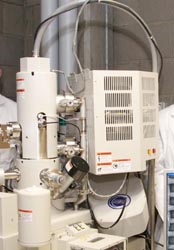Nanotechnology to help tackle major diseases
According to the World Health Organisation (WHO), cardiovascular disease is responsible for over half of all deaths in the EU and puts huge pressure on the labour force and family earnings. Meanwhile, due to the ageing population in the EU, osteoporosis-related bone fractures have almost doubled in the last decade - it is estimated that 40\;% of women over 50 will suffer from fractures due to low density bone. The European Commission believes nanotechnology could help address these problems and has made the design and control of biomaterial at the nano-metre scale a strategic research priority. One of the projects to benefit from this focus is the 'Electrically modified biomaterials surface' (Bioelectricsurface) project, whose team has been working with the aim of decreasing patients' trauma and the risk of death through a detailed understanding of nano-scale interactions of biological systems with biomaterials' surfaces. During the last year, the researchers have developed methods for electrical modifications of three leading biomaterials, namely hydroxyapatite (HA), polyurethane (PU) and titanium dioxide (TiO2). They have also studied biological interactions with these electrically modified surfaces, noting that preliminary studies showed a selective response of biological species, such as antibodies and cells, towards charged surfaces. The team is now developing techniques to further enhance this knowledge of and to exploit it in biomedical devices. The goal is to develop novel therapeutic devices in four specific biomedical applications: cardiovascular stents, urological stents, orthopaedic implants and grafts, and anti-microbial fabrics.







